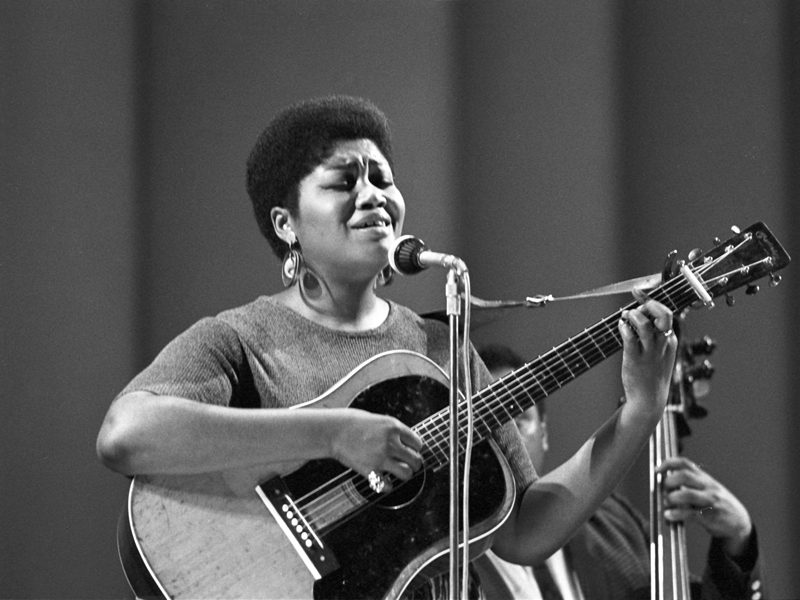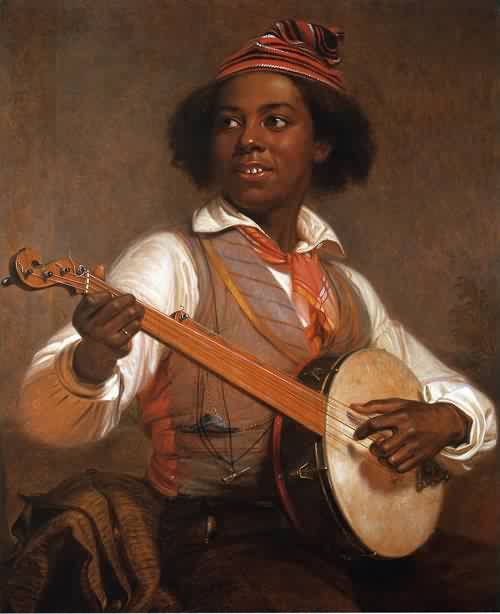Origins of the Genre
Many people believe that enslaved Africans came to America completely stripped of their language and culture; they had nothing to call their own. However, this is not the case. While they may not have carried physical objects with them, they remembered the rhythms and melodies of their music from their homeland. This was the beginnings of folk music in America. Early folk music was a form of resistance for enslaved peoples. It helped them work and it allowed them to express feelings they wouldn’t be allowed to express through speech. White slaveowners thought that this music was secular and evil, thus tried (in vain) to do whatever they could to prevent enslaved folk from making music.
Elements of the Genre
One of the most well known aspects of folk music is the banjo. Contrary to popular belief, the banjo was not invented by Joel Walker Sweeney, but by enslaved Africans. Early prototypes for the instrument were made of a gourd body and some strings. Another important element was the polyrhythm. A polyrhythm is an overlapping, complex rhythmic pattern that is still used in music today. Polyrhythms could be tapped out on drums or on the body. Enslaved Africans oftentimes tapped out rhythms on different body parts to accompany song and dance. This was called pattin’ juba.
Primary Performers

Huddie William Ledbetter, also known as “Leadbelly”, was born around 1885 near Mooringsport, Louisiana. He could play a number of instruments including the bass, harmonica and 12-stringed guitar. He was “discovered” while in jail by John and Alan Lomax who were trying to compile songs for the Library of Congress. They successfully lead an effort to free him and so he continued performing. Despite his skilled musicianship and vast repertoire, he died penniless. Less than a year later, his song “Goodnight, Irene” became a million-record hit through the band The Weavers.

Odetta was born on December 31, 1930 in Birmingham, Alabama. She is most well known for her versions of spirituals which became the anthems for theCcivil Rights Movement. She performed several times on television and appeared in film. Her supporters and fans include Harry Belafonte and Bob Dylan, who credited her for getting him interested in folk music.
Social Implications
As previously stated, singing helped enslaved peoples work. The rhythm of a given song could accompany whatever task they were completing. One person would lead the others in singing and work. This helped encourage the enslaved people and made the workload seem more bearable. On he other hand, singing also alienated enslaved people from white slaveowners. Oftentimes, they dismissed the songs as spirituals and nothing else. This lack of understanding and overall unwillingness to understand allowed the enslaved people to sing freely and express their hardships as a community.
Commodification
The earliest form of commodification occurred (mainly in the West Indies) when white slaveowners would force the enslaved people to sing and dance for them. In the South, enslaved folk were encouraged to dance and perform at Sunday services as a form of amusement. Southern slave owners thought the African dances were dehumanizing yet amusing.
Influence on Other Genres
Folk music, as one of the earliest genres, is the basis for most modern genres (namely blues and pop). Many elements of folk music (e.g. the polyrhythm) are incredibly important and useful elements of songs to this day.
Summary Opinion
While folk music isn’t necessarily my favorite, I definitely understand its importance in shaping modern American music. So many elements of the genre (which were previously elements of African music) are used in contemporary music and I respect folk music for that.


